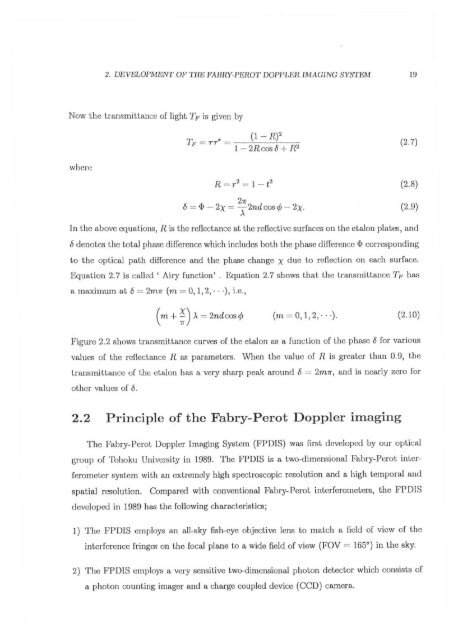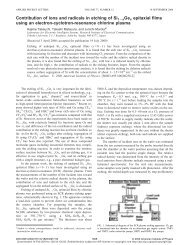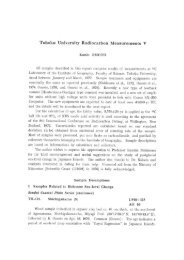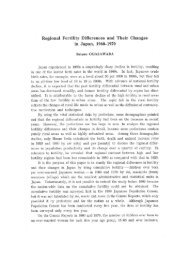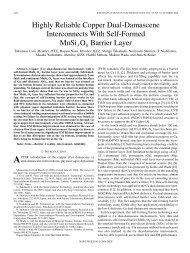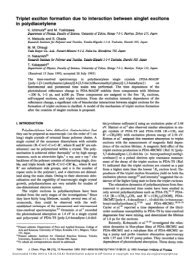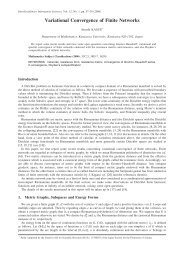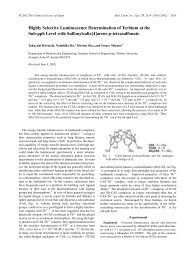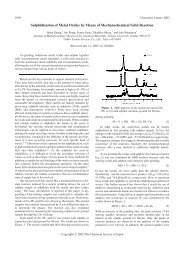MgE71241:1attf:3(t At-- 0 -3 5t5M I:. N1144±TitoD riziMinliJ VAT .9f 1 ...
MgE71241:1attf:3(t At-- 0 -3 5t5M I:. N1144±TitoD riziMinliJ VAT .9f 1 ...
MgE71241:1attf:3(t At-- 0 -3 5t5M I:. N1144±TitoD riziMinliJ VAT .9f 1 ...
Create successful ePaper yourself
Turn your PDF publications into a flip-book with our unique Google optimized e-Paper software.
2. DEVELOPMENT OF THE FABRY-PEROT DOPPLER IMAGING SYSTEM 19<br />
Now the transmittance of light Tr is given by<br />
where<br />
Tr, = TT*(1R)2 (2.7)<br />
1 — 2R cos 6 -I- R2<br />
R r2 12 (2.8)<br />
627r— 2x =—A 2nd cos 0---2x. (2.9)<br />
In the above equations, R is the reflectance at the reflective surfaces on the etalon plates, and<br />
6 denotes the total phase difference which includes both the phase difference cD corresponding<br />
to the optical path difference and the phase change x due to reflection on each surface.<br />
Equation 2.7 is called Airy function' . Equation 2.7 shows that the transmittance TF has<br />
a maximum at 6 = 27-n7r (in = 0, 1,2, • - -), i.e.,<br />
7ri-1- —X) = 2nd cos 0 (m = 0, 1, 2, • -). (2.10)<br />
7r<br />
Figure 2.2 shows transmittance curves of the etalon as a function of the phase 6 for various<br />
values of the reflectance R as parameters. When the value of R is greater than 0.9, the<br />
transmittance of the etalon has a very sharp peak around 6 = 2m7r, and is nearly zero for<br />
other values of 6.<br />
2.2 Principle of the Fabry-Perot Doppler imaging<br />
The Fabry-Perot Doppler Imaging System (FPDIS) was first developed by our optical<br />
group of Tohoku University in 1989. The FPDIS is a two-dimensional Fabry-Perot inter-<br />
ferometer system with an extremely high spectroscopic resolution and a high temporal and<br />
spatial resolution. Compared with conventional Fabry-Perot interferometers, the FPDIS<br />
developed in 1989 has the following characteristics;<br />
1) The FPDIS employs an all-sky fish-eye objective lens to match a field of view of the<br />
interference fringes on the focal plane to a wide field of view (FOV = 165°) in the sky.<br />
2) The FPDIS employs a very sensitive two-dimensional photon detector which consists of<br />
a photon counting imager and a charge coupled device (CCD) camera.


